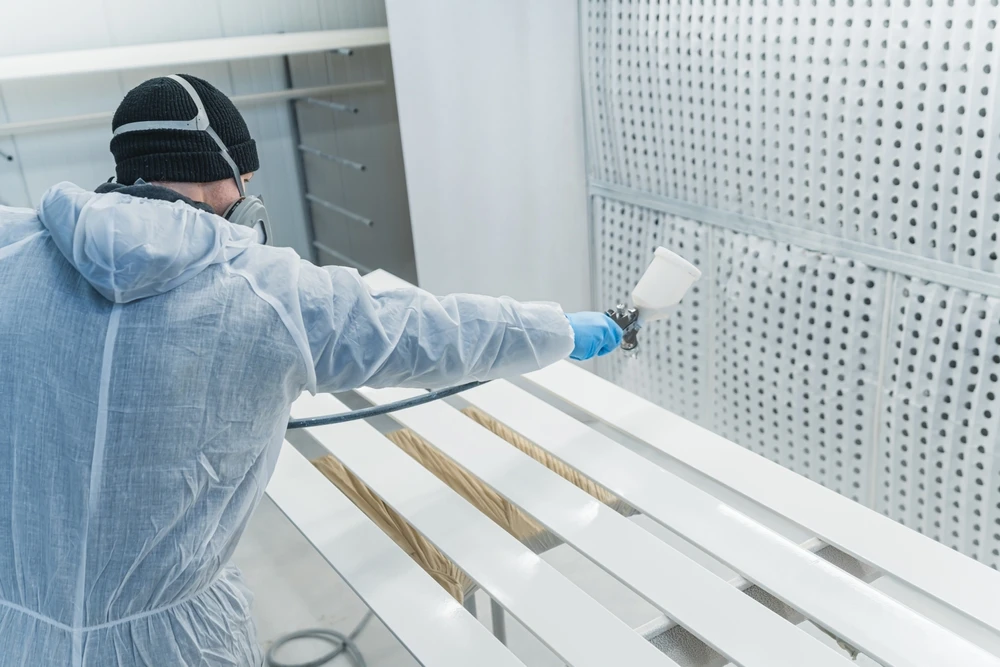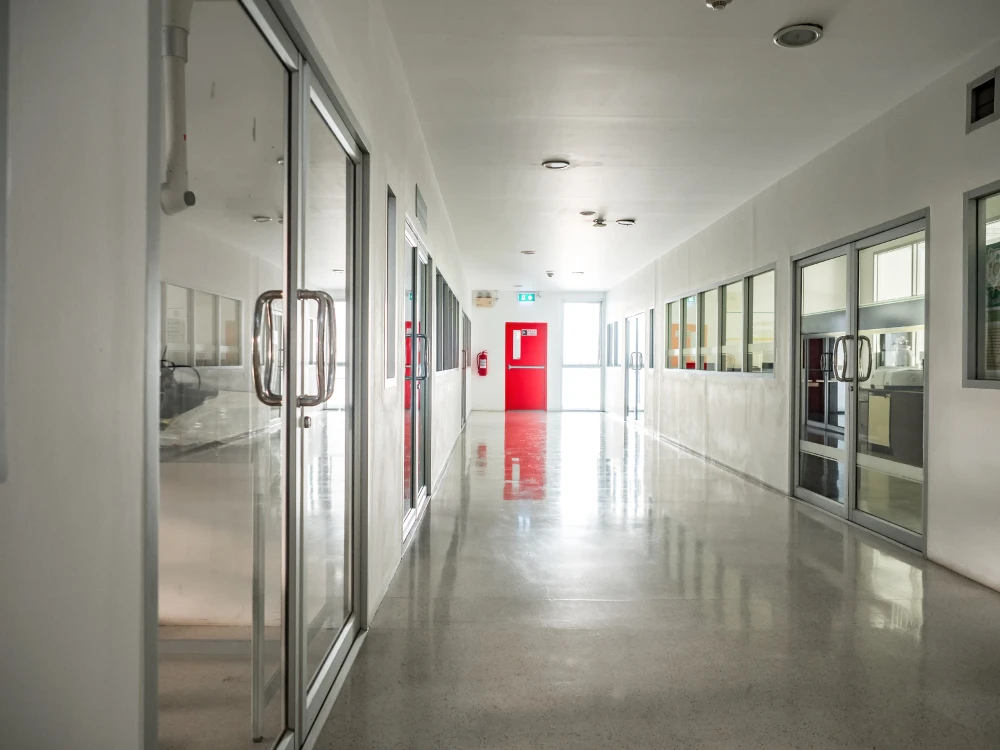Fire safety in contemporary architecture goes far beyond alarms and sprinklers. Today’s buildings are complex, multifunctional and deeply interconnected. That means they demand advanced passive fire protection strategies that safeguard both life and structure. At IECC, we’ve seen how modern fire-stopping systems have evolved to meet the challenges of new materials, integrated services and tighter performance standards. Effective fire-stopping isn’t just about filling gaps; it’s about preserving the integrity of every fire barrier so the whole system performs as one.
Let’s explore the latest fire-stopping innovations, best practices and quality assurance methods that define modern building safety.

Modern buildings demand far more from fire-stopping materials than ever before. As designs grow more complex, performance expectations have evolved dramatically. Fire-stopping isn’t just about plugging holes anymore. These materials must be durable, adaptable to movement and compatible with surrounding elements, all without compromising aesthetics or structural intent. Understanding these materials is essential for anyone involved in the design, installation or compliance of modern fire protection systems.
Intumescent coatings are among the most effective and adaptable materials in passive fire protection. When exposed to high temperatures, these coatings undergo a chemical reaction that causes them to swell, forming a dense, insulating char layer that shields structural elements from fire. This barrier reduces heat transfer, maintaining the integrity of steel, timber and even composite structures for extended periods during a fire event.
Vermiculite-based fire protection has stood the test of time due to its exceptional insulation properties and versatility. This mineral expands when heated, creating a lightweight, porous material that resists flame and thermal conduction. In modern construction, vermiculite is often used in spray-applied coatings for steel structures, providing a cost-effective alternative to intumescent systems for large-scale applications.
Fire-stopping sealants have evolved well beyond basic caulks and mastics. Graphite-based sealants are a prime example of next-generation technology. When heated, graphite expands, closing gaps and openings around and effectively sealing against fire and smoke. This makes them ideal for use around plastic pipes, cable bundles and joints that might otherwise allow rapid fire spread.
Silicone-based sealants, on the other hand, offer superior flexibility and weather resistance. These are used in dynamic joints and façade applications where movement, vibration or moisture exposure can cause rigid materials to crack or fail. We utilise these products in settings such as high-rise curtain walls, mechanical shafts and seismic joints where maintaining flexibility and fire integrity is essential.
Plastic and composite pipes pose one of the greatest challenges to fire integrity because they melt and collapse under heat. Modular fire-stop collars and wraps are designed to counter this risk by expanding during a fire to crush and seal off the pipe opening, maintaining the barrier’s fire rating. These solutions are standard in multi-residential, healthcare and commercial buildings where numerous services run through walls and floors. Modern collars are prefabricated, tested to Australian standards and available in adjustable modular designs that simplify installation.
Advantages of modular fire-stop systems:
Every cable tray, duct, conduit or pipe that passes through a fire-rated barrier creates a potential weak point where fire, smoke and toxic gases can spread rapidly. Without proper sealing, these small voids and openings can compromise an entire fire compartment, turning what should be a contained event into a building-wide emergency. We’ll explore the best practices that ensure services are sealed correctly the first time, covering selection of approved systems, detailed installation methods, coordination across disciplines and long-term maintenance considerations.
Before selecting or installing any fire-stopping system, the first step is to identify and categorise all service openings and pass-throughs across the building. This process is vital for ensuring that each opening is treated with a system that matches its unique configuration, fire rating and environmental exposure. During construction, multiple trades often create new ones or modify existing ones. Without systematic documentation and categorisation, some may be sealed with incompatible materials or, worse, left untreated.
The next step is selecting tested and certified systems. Every installation must use products and methods proven through full-scale testing for the specific service type and substrate combination. Each approved system functions as a tested assembly, comprising sealants, wraps, collars and backing materials, engineered together to perform under fire exposure. Substituting even one component can invalidate the entire system certification.
Modern buildings are dynamic environments. New cables are added, pipes are rerouted and systems evolve as technology advances. Fire-stopping strategies must anticipate this ongoing change. Maintaining accessibility and designing for future modifications can dramatically reduce costs and risks over the life of a building. As experts, we often incorporate modular and re-enterable solutions that allow for easy access during maintenance without compromising fire integrity.
Fire compartmentation is one of the cornerstones of passive fire protection design. It’s the principle that divides a building into controlled zones, allowing occupants time to evacuate safely and minimising structural damage. Without proper compartmentation, even the most advanced detection or suppression systems can be rendered ineffective, as fire can rapidly travel through unsealed joints and hidden cavities. By adhering to national and international standards while maintaining accurate traceability, building owners and contractors can achieve regulatory confidence and long-term safety assurance.
Effective fire compartmentation begins at the design stage, long before any physical installation takes place. The goal is to divide the building into clearly defined zones that restrict the movement of fire, smoke and hot gases, thereby preserving escape routes and protecting critical structural components. Achieving this requires precise coordination between architects, fire engineers and service trades to ensure that compartment lines remain intact throughout all stages of construction.
Documentation is the backbone of any verifiable fire-stopping and compartmentation system. Without proper records, even the best installations can be deemed non-compliant during inspection or audit. Documentation provides traceability, proving that each fire barrier and joint has been designed, installed and tested in accordance with relevant Australian standards.

Even the most advanced materials and meticulously designed assemblies can fail if they’re not installed, inspected and documented correctly. In modern construction, ensuring consistency and accountability in fire installations has become more critical. A single improperly sealed joint or undocumented modification can compromise the entire fire compartment and void compliance with the NCC and relevant Australian standards.
Quality assurance begins with people. No matter how advanced a fire-stopping product may be, its performance ultimately depends on the knowledge and skill of the installer. That’s why training and accreditation are essential pillars of a reliable passive fire protection programme. As professionals, we only deploy technicians who are accredited and up to date with current standards, installation methods and product certifications. Fire-stopping is not a one-size-fits-all trade; it requires a precise understanding of tested systems, FRL ratings and compatibility between materials and substrates.
Even with trained installers, supervision is key to maintaining integrity. Every project should include structured oversight from qualified supervisors who monitor preparation, application and completion. If something doesn’t match the tested system, it’s fixed immediately before handover.
The construction industry is embracing digitalisation, and passive fire protection is no exception. Traditional paper-based QA systems are being replaced by digital fire-stopping record platforms, allowing installers, certifiers and building owners to access real-time information with precision and ease. This approach ensures complete traceability and eliminates the risk of lost or incomplete records.
Ongoing maintenance and inspection are crucial to preserving their performance and abidance. Over time, building modifications, environmental factors and service upgrades can compromise these systems, creating hidden vulnerabilities that may go unnoticed until an inspection or emergency reveals them. Simple issues can all void certification. Regular inspections ensure that every component, from sealants and wraps to fire collars and barriers, continues to perform as originally tested and installed.
Scheduled inspections form the foundation of a building’s passive fire protection maintenance plan. They ensure that every installed fire-stopping component continues to function as intended and remains compliant with the original fire design. We recommend that inspection intervals be aligned with the building’s risk profile, occupancy type and local regulatory requirements. For most commercial and multi-residential buildings, a thorough inspection should occur with additional checks whenever new services are installed, walls are penetrated or renovations occur.
Even the best fire-stopping materials are susceptible to wear and environmental impact over time. Recognising early signs of degradation is critical to ensuring that repairs or replacements occur before fire performance is compromised. Our inspection teams are trained to identify subtle but significant indicators that a system may no longer meet its intended level. Degradation can result from mechanical impact, environmental exposure, building movement or simply natural ageing of materials.
Thorough documentation and transparent reporting are essential for verifying that passive fire protection systems remain compliant throughout their lifespan. Every inspection, maintenance activity or system modification must be recorded to create a traceable history that satisfies auditors, certifiers and regulatory authorities.
The effectiveness of any passive fire protection measure relies not only on product quality and certification but also on the precision of its installation. Unfortunately, on construction sites, critical mistakes in fire-stopping application remain one of the most common causes of fire failure. Issues stem from a lack of coordination between trades, poor surface preparation or the use of substitute materials that have not been fire-tested for the particular application. Such errors not only compromise the building’s fire compartmentation but also invalidate certificates and insurance coverage.
One of the most frequent causes of fire-stopping failure is product substitution, replacing one or more components of a tested system with an alternative material that has not been evaluated under the same fire conditions. While these substitutions are often made for convenience or cost-saving reasons, they can invalidate the entire fire rating of the system and expose building owners and contractors to serious risks.
Surface preparation is another overlooked yet crucial step in achieving a compliant fire-stopping installation. A sealant or coating can only perform effectively if it adheres properly to the surrounding substrate. Dust, oil, moisture or uneven surfaces all reduce adhesion and prevent the material from curing as designed, leading to premature cracking, detachment or air gaps that allow smoke and fire to pass through.
Movement joints are built to handle a building’s natural expansion and contraction. When ignored or sealed incorrectly, they become weak points. Cracks form, and fire or smoke can breach compartment boundaries. The result? A complete system failure, even if all materials are compliant elsewhere. Using rigid materials or omitting joint allowances altogether can lead to catastrophic performance issues during a fire event.
Advanced fire-stopping techniques are vital to keeping modern buildings safe from fire and smoke. From smart intumescent materials to digital QA systems, today’s solutions are more reliable than ever. At IECC, we combine engineering expertise, compliance assurance and ongoing maintenance to deliver protection that lasts. The result is confidence and buildings built to stand the test of time.